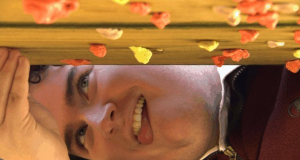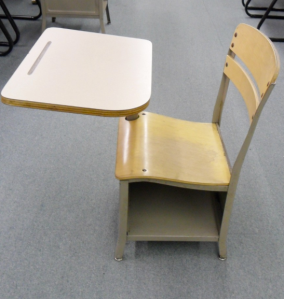 I want to have coffee with a friend. We struggle to squeeze it in.
I want to have coffee with a friend. We struggle to squeeze it in.
“How about two Fridays from now?” Why can’t we get our calendars to stop fighting so we can drink coffee? Eventually, one calendar wins. Coffee arrives.
What starts as coffee with a good friend ends as vision. Always does. Soon, note pads, pens, Macs, iPhones and iPads clutter the table, pushing our freakishly healthy foods aside.
Usually when two or more teachers are in the room, venting begins. Bitching even. Everyone opens the valve a little. My husband doesn’t understand this. He wonders why teachers bitch. He hates it. He won’t go to “teacher things.”
“It’s not bitching,” I explain, “It’s ‘looking for solutions.'” Sure, there are People Who Bitch. They’re the ones speaking negatively about others–students, colleagues, and leadership. When good teachers gather, it’s not bitching. It’s seeking answers for real problems. When the fixes are out of reach, there’s frustration. Especially when frustration takes good people down.
“I’ll never go back into the classroom,” I hear it more and more. “I can’t do all this testing and stuff.” People go into leadership, guidance, or whatever because, they say, they’re “done with the classroom.” Others–good people–jump into those roles to save the world, finding windmills to fight on that side of the fence, too.
“This isn’t for me. I’m no good. Didn’t realize it would be this way–I wanted to change lives, not tabulate test scores.” That was roughly the quote I got from someone leaving the profession–literally, box in hand. Midyear.
Good teachers fear tests and evals. Sure, accountability’s in every profession. Can we do it better though? I heard Steve Blank talk at last year’s Business Innovation Factory conference. “Fire the idea, not the person,” he said.
Steve Blank is a pretty smart guy. As one of Forbes Magazine’s “30 Most Influential People in Tech,” he’s not only written textbooks on how startups should be created and grown, he even changed the way the National Science Foundation spends money to align with the systems of successful entrepreneurs–systems he invented.
Anyone who changes the way government spends money has the ear of this lowly teacher.
His thoughts were simple. Sometimes you need to fire the idea, not the person, he said. Run the numbers without blame. Then fix the problems.
Getting rid of judgment helps people be objective and take risks. Risks produce results. Taking risks in education can get a person low scores, though, so there’s fear.
Fear about things real or imagined shuts good people down.
Fear does not produce vision.
Fear is conquered by vision.
Vision, luckily, is found in a cup of coffee with a friend. It pours out our hearts into the vortices swirling throughout the mugs into reality. All the little things mixing and colliding in the swirls…that’s the vision. Every sip, gulp, cup waiting for a sip–vision. Leaving the cup on the counter to go cold is missing the possibilities–so easy to do when rushing around. Steam goes uncaptured into the universe. Vision lost.
But sitting with my friend, vision pushes aside inconsequential girl talk. It says things like, “Sounds like you might consider,” and “That happens to me. I’ve tried…” or “I notice you write a lot about this, but I’d really like to read it if you wrote this…” or “I’d buy that idea…”
Every single time I meet Vision Friend, I leave with a dozen working plans. On a good day, I have pages of notes. On a crazy day, we’ve got blogs, businesses, books, and concepts racing around the room trying to get to the finish line first so we might convert them to reality.
Vision conquers fear. And accountability defeats complacency. Inaction. Inertia. This is why vision needs company. It needs someone to say, “Hey, you told me you were going to….how’s that going?”
Otherwise, we’re tempted to “forget” we promised to do something, and vision dies. Vision often requires courage, support, and the swirly things in a cup of coffee to produce results. Follow-through. Reality.
I know vision’s in the room when my heart leaps just a bit and the notepad comes out. The more I surround myself with friends who make my heart leap just a bit and pages fill on notepad, the better I become. I want to be better. And I want to make other people feel that they are better for having known me.
It’s a simple goal. One I hope I can meet. I think I can, if I have just one more cup of coffee…with my good friend.
Notes:
My “vision” friend, Alicia, blogs here: WriteSolutions under the tag “Student Learning Is No Accident.”














